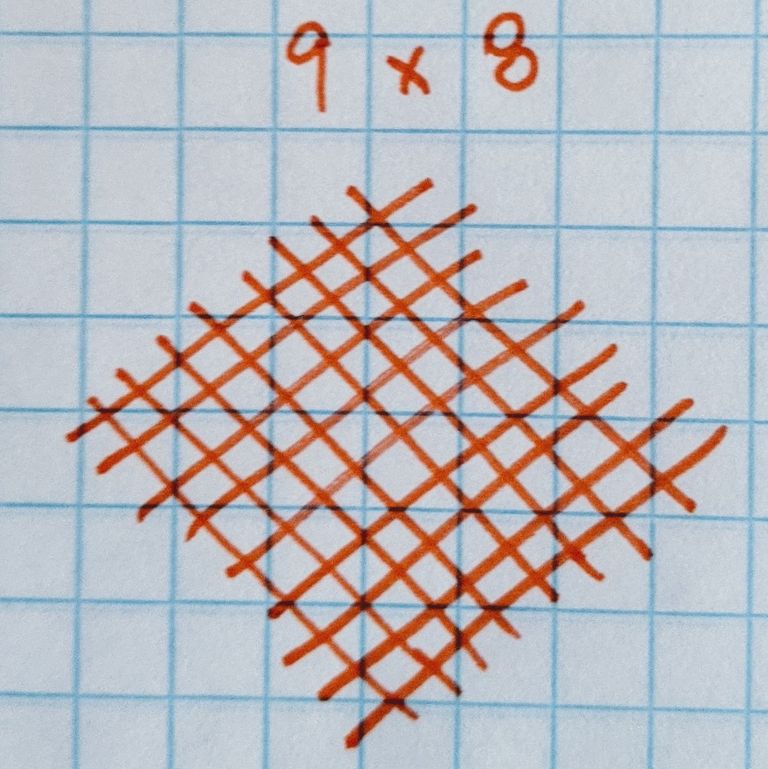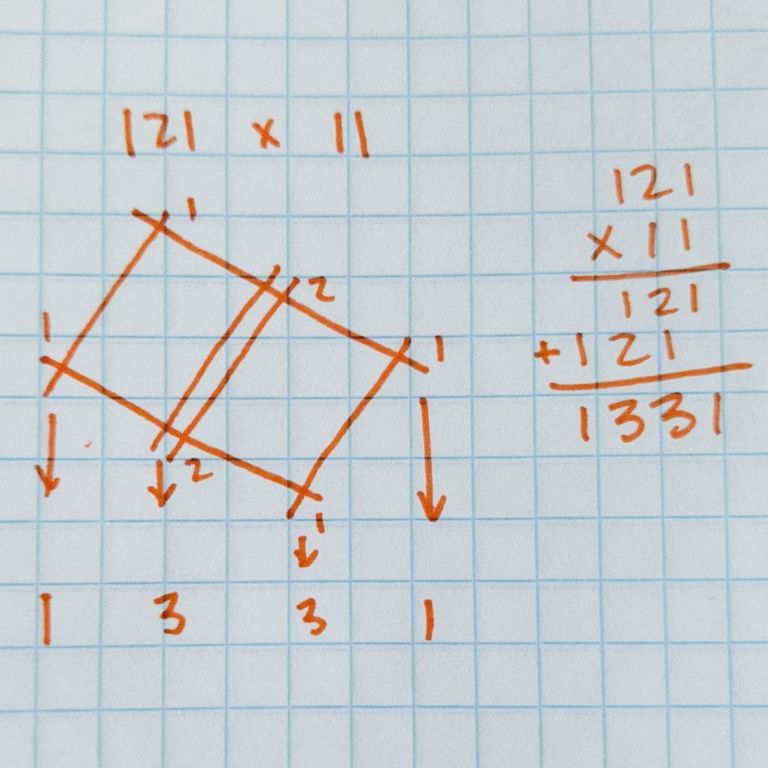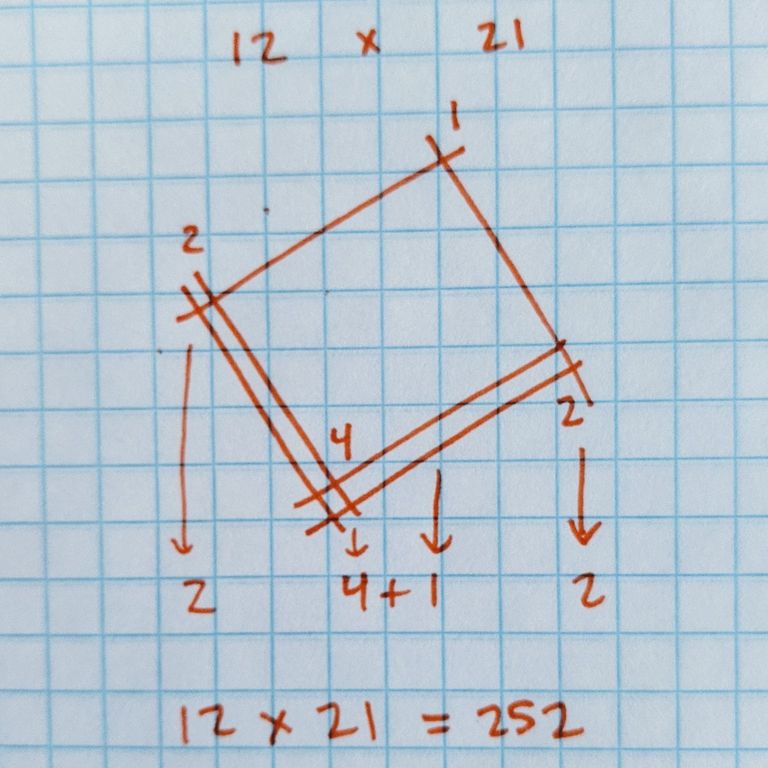Recently a video of a unique multiplication technique has resurfaced on Twitter and it has people going bonkers. The Twitter user has called the method ‘Vedic multiplying’ but the real origins of the technique remain unclear. It is accredited to the Japanese sometimes and sometimes it is linked with the Chinese. The technique has also been called the line or stick multiplication and line or stick method.

It is, essentially speaking, a graphical depiction of how most of the American children and others all over the world learn to multiple. For the right sort of numbers, it can enable people who have minimal math knowledge to come up with answers. So, how do you do it?
Once you have arranged the numbers in the way shown, you are basically mimicking the columns in traditional long multiplication. You can understand it better with a three-digit multiplicand as shown below. For example, where numbers feature small individual digits, the stick method is quite elegant. However, the graphical representation tends to get quite intricate for bigger digits.

Although the Vedic multiplying or the stick method has been shown in viral videos as a trick, its applications along with other techniques for multiplication that have been documented suggest that they were not designed to look impressive. People who don’t know how to write and read benefitted from methods such as stick method since it enabled them to break problems into actual physical pieces that could be arranged and counted.

Vedic math refers to the sort of math that was used by people in ancient India during a time that is referred to as the Vedic period. However, the term was coined in a 1960s book that claimed that the secrets of all mathematics have been unlocked from some previously misinterpreted ancient texts. Nowadays, the term Vedic math is used for math shortcuts thus imparting them a mysterious and ancient touch. Keeping all of that aside, do let us know what you think of the stick method of multiplication!


